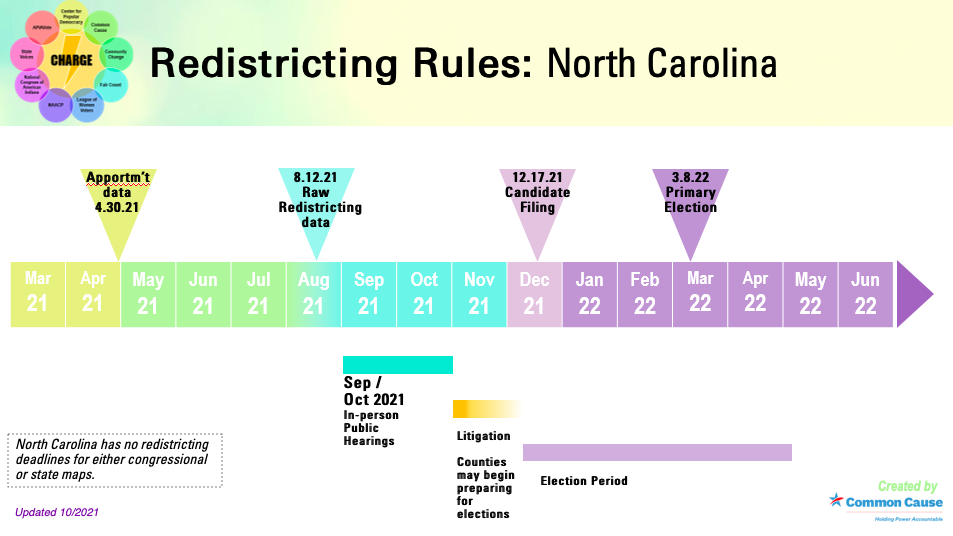Every ten years, North Carolina redraws its federal, state, and local legislative district maps. This process is meant to ensure that as populations grow and change, every North Carolina voter can have equal representation and equal voice in government.
We’re fighting for fair, transparent, and equitable redistricting at every level — advocating for legislation like the Freedom to Vote Act to help end partisan gerrymandering, bringing North Carolina residents to testify at public hearings, and telling our mapmakers the story of communities across North Carolina.
North Carolina State Legislative and Senate Districts
In North Carolina, both congressional and state legislative redistricting is controlled by the state legislature — and is not subject to a gubernatorial veto. When partisan politicians control the mapmaking process, we’re especially vulnerable to gerrymandering — which is why it’s so important we push our lawmakers to be transparent and consider public testimony every step of the way.
Mapping Criteria
Mapmakers must prioritize:
- Districts must comply with the provisions of the US Constitution and Voting Rights Act and keep districts reasonably equal in population.
- Keeping communities of interest and political subdivisions whole.
- Compactness
- Maximizing the number of politically competitive districts
Districts may not be drawn:
- To protect one or more incumbents, declared candidates, or political party.
- With intent or effect of denial/abridgement of voting rights or vote dilution because of race or membership in language minority group.
Why Redistricting Matters for North Carolina
When done fairly, redistricting is a chance for political power to be equitably distributed across different communities, making sure everyone has a seat at the table.
Unfortunately, redistricting has historically been conducted behind closed doors with little to no public input, meaning they don’t have an accurate picture of what our communities look like.
Even worse, when politicians have the power to draw electoral maps, they manipulate district lines to divide or pack together certain populations, keeping themselves and their party in power. It’s called gerrymandering – and it’s a major threat to our democracy.

Key Dates For North Carolina 2021 Redistricting
Hearings are held across North Carolina until the end of September. When the legislature receives the federal Census data, they use that and public input to create draft maps. In North Carolina, the state legislature has the power to draw and approve the maps. The governor cannot veto them.
Public hearings have officially begun in North Carolina! Join us at an upcoming hearing in your area:
- Thursday, September 23 – Shearer Hall at the Iredell County Campus of Mitchell Community College, (500 W Broad St, Statesville NC, 28677), hearing starts at 3:00 pm – Sign up to speak here.
- Tuesday, September 28 – Office for Regional Initiatives at UNC-Pembroke (115 Livermore Drive, Pembroke NC, 28372), hearing starts at 4:00 pm – Sign up to speak here
- Wednesday, September 29 – Lumina Theater in the Fisher Student Center at UNC-Wilmington (615 Hamilton Drive, Wilmington NC, 28403), hearing starts at 5:00 pm
- Thursday, September 30 – Tony Rand Student Center, Rooms 9.1 & 9.2 at Fayetteville Technical Community College (2220 Hull Road, Fayetteville NC, 28303), hearing starts at 6:00 pm
Public Comments Portal: The North Carolina General Assembly has made available an online public comment form for the public to comment on this year’s congressional and state legislative redistricting. The form will be active throughout the redistricting process. Here is the link: https://www.ncleg.gov/requestforcomments/38.


North Carolina Redistricting Resources
Use these resources to learn more about how you can get involved in fighting for fair districts and stopping gerrymandering in North Carolina.